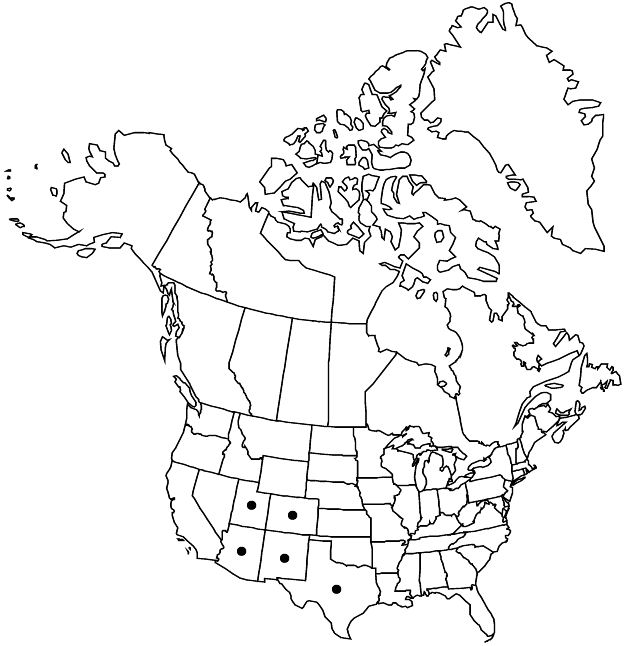Arceuthobium vaginatum subsp. cryptopodum
Brittonia 17: 230. 1965.
Plants forming nonsystemic witches' brooms; staminate and pistillate plants not dimorphic. Stems green, yellow, orange, reddish brown, or dark purple; secondary branching fanlike, branches 10–20(–27) cm, third internode 4–16 × 2–4.5 mm, dominant shoot 2–10 mm diam. at base. Staminate pedicels absent. Staminate flowers radially symmetric, lenticular in bud, 2.5–3 mm diam.; petals 3–4(–6), green, greenish yellow, or light pink, sometimes differing abaxially and adaxially. Berries proximally olive green, distally brown, 4.5–5.5 × 2–3 mm. Seeds pyriform to ellipsoid, 2.8 × 1.8 mm, endosperm green or green and maroon. 2n = 28.
Phenology: Flowering (Apr–)May–Jun(–Jul); fruiting Jul–Aug(–Sep).
Habitat: Coniferous forests with ponderosa pine.
Elevation: 1700–3000 m.
Distribution

Ariz., Colo., N.Mex., Tex., Utah, Mexico (Chihuahua, Coahuila, Sonora).
Discussion
Meiosis occurs in March to April, with fruits maturing 14 to 15 months after pollination; seeds germinate in August to September immediately after dispersal.
Subspecies cryptopodum occurs in the southwestern United States and northern Mexico whereas subsp. vaginatum occurs in the Sierra Madre Occidental and Sierra Madre Oriental of Mexico. The two subspecies are sympatric in central Chihuahua, where some morphologically intermediate populations occur. The Mexican subspecies is often deeply pigmented (dark brown to black), has larger shoots and staminate flowers, and flowers in May and June.
Subspecies cryptopodum can be found parasitizing its most common principal host, Pinus ponderosa var. scopulorum, in nearly every location where this tree occurs. It forms nonsystemic witches’ brooms that can be massive, increasing the longevity of the supporting branch, which would normally self-prune. This subspecies also parasitizes other principal hosts such as P. arizonica, P. durangensis, and P. engelmannii as well as secondary and occasional hosts such as P. aristata, P. contorta, and P. cooperi. The parasite can be damaging to its host in some portions of its range, such as the Front Range of the Rocky Mountains in Colorado and south-central New Mexico.
Selected References
None.